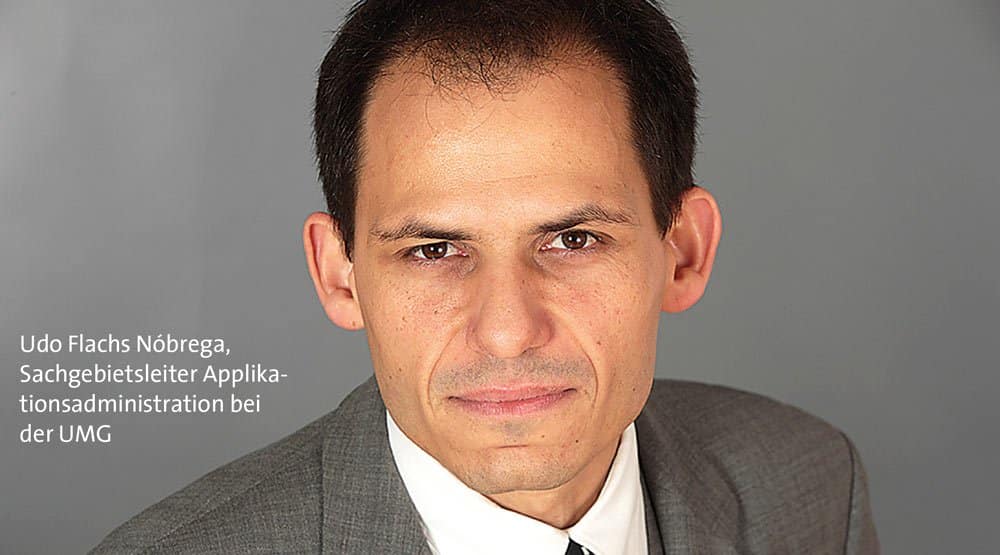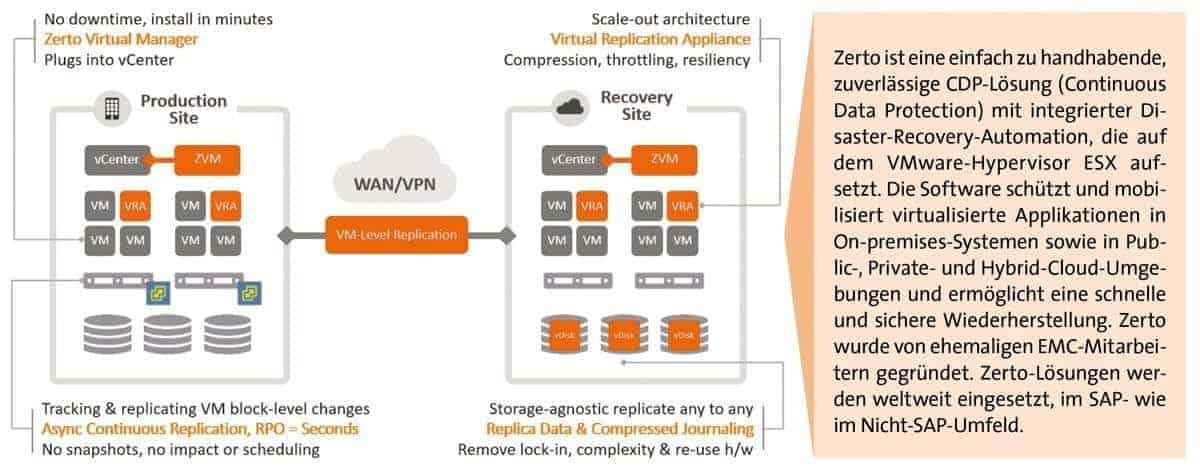More Business Continuity


The optimization was implemented together with the services division of Empirius using the Zerto-IT Resilience Platform.
Like other companies that rely on SAP applications to support their business processes, the University Medical Center Göttingen (UMG) puts its IT to the test from time to time.
Especially in terms of High Availability (HA) and Disaster Recovery "we identified an urgent need for optimization in business continuity as a result of an IT analysis almost three years ago.
The time required for SAP recovery in the event of a possible system failure should be within a reasonable range of minutes instead of several hours - and at a manageable cost."
explains Udo Flachs Nóbrega, head of application administration at UMG.

UMG tackled the business continuity (BC) project with its chosen service partner, Empirius from Munich, with whom it had already implemented a number of projects in the SAP Basis area in the past and who is the software supplier of the Blue System Copy solution used to create SAP system copies.
The first step was to evaluate possible BC concepts and HA and DR solutions. It became clear relatively early on that, for example, pure database- or storage-centric DR concepts and solutions only partially met the requirements and did not meet UMG's expectations in terms of costs.
Combined under the University Medical Center Göttingen of the Georg-August-University are the Medical Faculty of the University and the University Hospital.
The aim of the dovetailing is the organizational integration of the Medical Faculty and the University Hospital in patient care as well as teaching and research.
There is a three-member Executive Board with the departments of research and teaching, patient care, and business management and administration, which also includes IT.
With around 1500 beds, the hospital represents a central focus of patient care in the region of southern Lower Saxony. UMG is the largest employer in the region with around 7,700 employees (including medical staff, excluding auxiliary staff).
UMG has been using various NetWeaver-based SAP applications (FI/CO, MM, PM, SD, HR and industry solutions) together with the Oracle database and the Windows operating system for around 20 years. There are currently around 10,000 SAP users.
As UMG subject area manager Flax Nóbrega elaborates, "For us, the SAP applications are business- or enterprise-critical. A prolonged, even hours-long SAP system failure would simply be fatal".
Non-disruptive versus recovery
Against this background, UMG decided on the recommendation of the service provider Empirius for a solution approach that focused more on ensuring uninterrupted business processes and not on the recovery of IT components, such as the use of a shadow database solution. Recovery time objective and recovery point objective considerations were taken into account.
Roughly outlined, UMG today has a permanent SAP data system replication (a total of 19 servers and databases, fully virtualized with VMware) from the productive data center to an emergency data center (also with 19 servers and databases), so that there is practically a permanent system or data mirroring.

And they do so at intervals of a few minutes at a time. In the event of a failure of one or more SAP production systems, the system switches to the emergency data center; a connection to the SAP application servers and SAP system operation are then carried out from there.
"Which replication level should come into play can be freely determined. This also enables us to analyze errors. The productive data center is located on the UMG campus, the connected emergency data center in the city of Göttingen".
so flax Nóbrega.
The core element of the new business continuity concept is the innovative, easy-to-use and cost-effective Zerto-IT Resilience Platform solution (see box).
Because of Zerto, UMG saves large amounts annually on licensing costs compared to a traditional BC solution built on mirrored databases.
Regular emergency tests
All SAP HR/HCM systems were converted to the new business continuity concept in April 2018. FI/CO, MM, PM, SD systems followed in November 2018, according to UMG, "In the meantime, we have familiarized ourselves extensively with the handling of the new solution and the use of Zerto.
At the start of the project, emergency tests were conducted weekly, fine adjustments were made, and now everything is working as needed."
After all, it is not enough to have a smart HA solution in place, but also to know how to handle it if the worst comes to the worst. The new solution was implemented together with experts from Empirius, who continue to be available for any questions regarding system operation or Zerto.
From the perspective of the University Medical Center Göttingen, the project has been worthwhile in any case. Whereas in the past the recovery with the previous solution took several hours, even up to a day, before SAP or the business processes could be used again, with the current BC solution it takes a maximum of around 15 minutes.
"In addition, the emergency environment can also be used as an SAP productive system, for example during maintenance work or planned downtime in the productive environment. Before that, the system is simply switched over.
Flax Nóbrega explains.
It is now also possible to create sandboxes with anonymized production data from the emergency environment at any time, for example to test new functions. This is not possible with a classic DR database solution.
UMG is currently working intensively on its ERP Strategy 2030, which focuses on digital transformation. The ERP strategy is being created and the future architecture derived on the basis of the company's goals, investment protection and integration.
In 2019, the decision is to be made by the UMG board and the university's presidium. "Here, the topic of business continuity has an equally high priority," Flax Nóbrega emphasizes in conclusion.






